If marijuana was lettuce would you eat it? Dr. Nan Miller talks about pot and teens
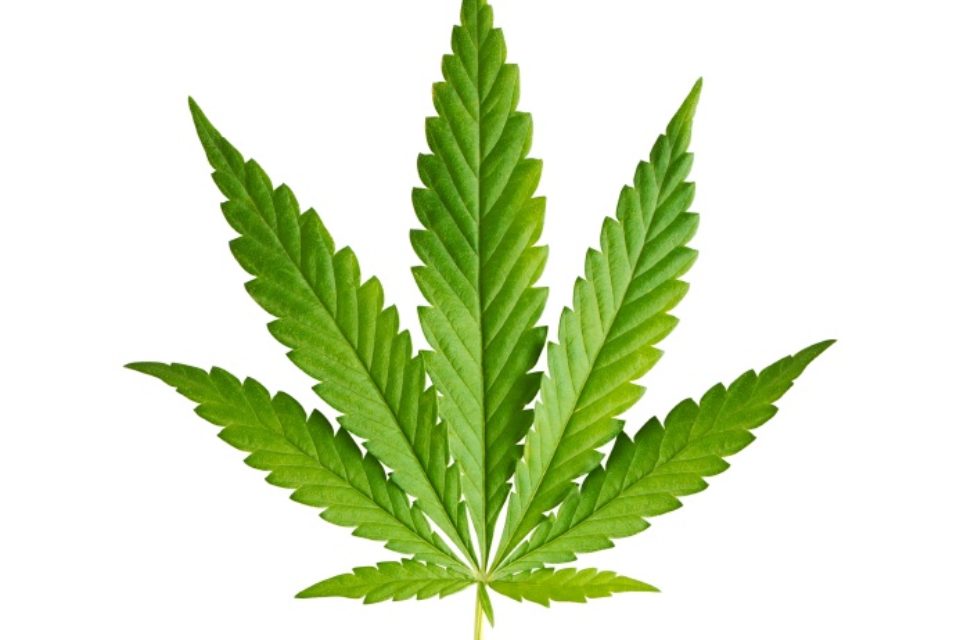
The growing health consciousness of the American consumer that has changed buying preferences in favor of organic and sustainably farmed meats and produce is palpable at the same time that society is becoming much more accepting of the use of marijuana. Witness recent legislative trends that have resulted in four states (Colorado, Washington, Oregon and Alaska) legalizing its recreational use while currently 23 states and the District of Columbia have laws legalizing marijuana in some form. But “legal is not safe” says Dr. Nan Miller, Armonk resident, psychotherapist, social worker and coordinator of Mt. Kisco Partners in Prevention.
She told us that“Marijuana is an addictive substance that has negative impacts on the brain’s functioning and development.” “The whole marijuana plant … has more than 400 chemicals and many unknown and carcinogenic components.” “Marijuana smoke contains 50 to 70 percent more carcinogenic hydrocarbons than tobacco smoke.” “Today’s street marijuana contains … five times as much THC … as the weed of the 60s and 70s,” and “a recent study … indicated an eight-point irreversible drop in IQ among those who used marijuana regularly before the age of 18.” Which begs the question, if marijuana was lettuce would you eat it? Here’s our Q&A with Dr. Miller.
Attitudes toward marijuana use have changed and many people consider it harmless. Is it?
 Today everyone accepts that cigarette smoke in your lungs causes cancer, even at the secondhand level. But ask anyone who grew up in the 50s about those tobacco ads that showed medical doctors praising the virtues of cigarettes. Doctors told us that this brand of cigarette soothed the throat, or that brand relaxed us. Fool me once . . .
Today everyone accepts that cigarette smoke in your lungs causes cancer, even at the secondhand level. But ask anyone who grew up in the 50s about those tobacco ads that showed medical doctors praising the virtues of cigarettes. Doctors told us that this brand of cigarette soothed the throat, or that brand relaxed us. Fool me once . . .
Attitudes are changing toward marijuana because a lot of big money is being spent to ensure that happens, but the facts remain: Marijuana is an addictive substance that has negative impacts on the brain’s functioning and development. Some components in the cannabis plant that do have useful applications for certain medical conditions are already available to patients in forms that can be dosed, e.g. pills, which is a more sensible way to administer medicine than smoking it. The whole marijuana plant, on the other hand, has more than 400 chemicals and many unknown and carcinogenic components that have not been accepted by scientific and medical authorities as medicines. Marijuana is not harmless.
How many kids are using? When do they start? What are the trends?
The good news is that most young people are making healthy choices to remain marijuana free. Unfortunately, given the negative impacts of marijuana use on the developing brain, the use rates are still higher than we would like. We know that children as young as twelve are using marijuana in all fifty states—that’s the age when ongoing national studies begin tracking its use.
In Westchester County, high school students report using marijuana at a rate that increases pretty steadily between the ninth and twelfth grades, going from almost 7 percent of freshman up to 22.6 percent of seniors reporting use in the past 30 days at the time of the survey. Almost a quarter of our local high school graduates are going off to college or the job market having used marijuana. The national Monitoring the Future survey indicates that about 6 percent of high school seniors report using marijuana daily. That means, statistically speaking, at least one of the students in your teen’s senior English class is high on weed for some part of the day.
What are the effects of marijuana use on the brain?
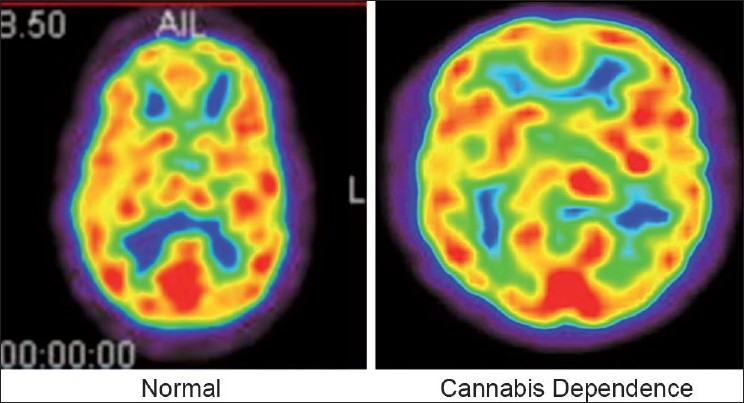 Marijuana use affects adolescent brains more than it does adults’, enlarging the cerebellum and interfering with the development of the executive areas of the brain. Using marijuana damages brain connectivity and sabotages its natural reward system—the response mechanisms that make us feel good based on outside stimuli. Translation: Marijuana use negatively affects motivation, memory, and learning, and its effects can persist in your body for up to four weeks after using.
Marijuana use affects adolescent brains more than it does adults’, enlarging the cerebellum and interfering with the development of the executive areas of the brain. Using marijuana damages brain connectivity and sabotages its natural reward system—the response mechanisms that make us feel good based on outside stimuli. Translation: Marijuana use negatively affects motivation, memory, and learning, and its effects can persist in your body for up to four weeks after using.
One of the biggest risks of using this drug is addiction. Yes, marijuana is addictive. Marijuana withdrawal is a recognized medical diagnosis. Research has found that 1 in 11 of all marijuana users will become addicted to the drug. And if a person begins using under the age of 18, that number rises to 1 in 6 people.
Another big risk in using marijuana is the possibility that it will lead to other drugs. Marijuana can prime the brain for a heightened response to other drugs and, like alcohol and nicotine, is typically used before a person progresses to other, more harmful substances. Not every user will progress to “harder” substances, but some definitely will.
In addition, marijuana use can increase the risk of heart attack, and has been linked to psychosis, schizophrenia, depression and anxiety disorders in young people. By the way, marijuana smoke contains 50 to 70 percent more carcinogenic hydrocarbons than does tobacco smoke, as reported by the American Lung Association. Respiratory problems are common among regular/heavy smokers.
What other risks does marijuana pose for teens?
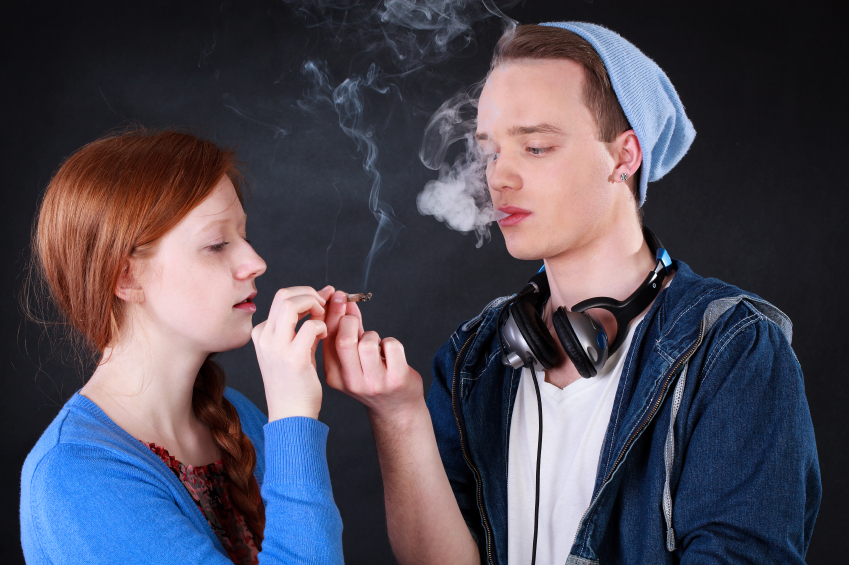 Marijuana use, as with alcohol or other drugs, impairs judgment as well as physical functioning. This means a young person under the influence is more likely to be involved in a fight, a car crash, an unwanted or unsafe sexual experience. High-risk behavior is frequently associated with a young person’s use of substances. And not surprisingly, so is the lack of academic achievement. Studies reveal that the more a student uses marijuana, the lower their grade point average is likely to be, and the greater the likelihood they will drop out, or have an enrollment gap in school. When it comes time to seek employment, marijuana users will have to restrict their job hunting to companies and professions that do not require drug testing. That usually means the low end of the pay scale.
Marijuana use, as with alcohol or other drugs, impairs judgment as well as physical functioning. This means a young person under the influence is more likely to be involved in a fight, a car crash, an unwanted or unsafe sexual experience. High-risk behavior is frequently associated with a young person’s use of substances. And not surprisingly, so is the lack of academic achievement. Studies reveal that the more a student uses marijuana, the lower their grade point average is likely to be, and the greater the likelihood they will drop out, or have an enrollment gap in school. When it comes time to seek employment, marijuana users will have to restrict their job hunting to companies and professions that do not require drug testing. That usually means the low end of the pay scale.
How has marijuana changed since we were teens?
Today’s street marijuana is much more potent than the “weed” of the 1960s and 70s, as it usually contains four to five times as much THC—the psychoactive component that produces the “high”—and depending on the producer, it can have even more than that. In addition to potency, the big change these days is the method of intake. “Vaping” it in a “pen” rather than smoking it in a “blunt” (a hollowed-out cigar) means there is no telltale odor. And e-cigarettes can easily be altered by the user to accommodate a marijuana cartridge instead of nicotine. This makes it possible to use the drug in public venues without detection. Attendance at concerts, sports events and the like have taken on new potential for high-risk behavior and the consequences that go with it.
But it won’t kill you, right?
 It is possible to overdose on marijuana—emergency room visits related to marijuana have nearly doubled, from 66,000 in 2004 to 129,000 in 2011, according to the Substance Abuse and Mental Health Services Administration.
It is possible to overdose on marijuana—emergency room visits related to marijuana have nearly doubled, from 66,000 in 2004 to 129,000 in 2011, according to the Substance Abuse and Mental Health Services Administration.
True, marijuana alone isn’t likely to kill you, if you don’t count the increased possibility that you will be in a car crash if you use and drive. But you need to consider the impact on your life of possible chronic respiratory distress if you smoke it, increased risk of psychosis, anxiety, depression and a series of attitude and personality changes—all these claims are supported by research. Then there is the study that indicated an eight-point irreversible drop in IQ among those who used marijuana regularly before the age of 18, and the long-term struggle with addiction for those one-in-six young persons who will become dependent.
What are the dangers of combining marijuana and alcohol?
I have heard a doctor describe the combination this way: “Alcohol plus a drug is not addition, it’s multiplication.” Whatever effects alcohol is having on your brain and your body, adding marijuana, or any drug, for that matter, multiplies your responses to the substances you’ve taken at unpredictable levels. Even if your blood alcohol concentration (BAC) has not gone over the legal limit, you are easily too impaired to get behind the wheel if you have been drinking and smoking marijuana.
In addition to the impairment of judgment, marijuana can make it possible to drink alcohol until dangerously high BAC levels are reached. The same anti-emetic properties that indicate marijuana as a treatment for nausea and vomiting in medical conditions permit it to subvert the normal body defense of vomiting when too much alcohol has been consumed.
Is it really more benign than alcohol use?
Though alcohol remains the most used drug among young people under 21 in the U.S., marijuana is the number one reason young people enter into treatment for substance abuse. Less use, more addiction. That says it is anything but benign.
Kids are getting mixed messages about pot. It is illegal at the federal level. Not so much in Colorado, Oregon, Washington and Alaska.
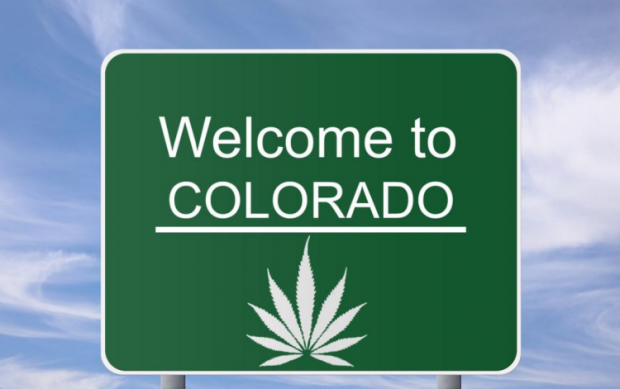 “Legal” is not a synonym for “safe.” Legalization does not alter the effects of marijuana on a young person’s brain development, render it non-addictive, or make it safe to get behind the wheel if you’ve been smoking. In fact, the very high THC “brands” being marketed in Colorado may be accelerating the addiction rate. Medicinal use of marijuana exposes the patient to all the same downsides as any other user. Parents need to help their children make these distinctions when they encounter messages that portray marijuana in a positive light. The consequences of use—researched and documented—remain the consequences regardless of what state you are in or the reason you are using the drug.
“Legal” is not a synonym for “safe.” Legalization does not alter the effects of marijuana on a young person’s brain development, render it non-addictive, or make it safe to get behind the wheel if you’ve been smoking. In fact, the very high THC “brands” being marketed in Colorado may be accelerating the addiction rate. Medicinal use of marijuana exposes the patient to all the same downsides as any other user. Parents need to help their children make these distinctions when they encounter messages that portray marijuana in a positive light. The consequences of use—researched and documented—remain the consequences regardless of what state you are in or the reason you are using the drug.
What are the signs that your child may be getting high?
Some signs to watch for, as suggested by the Partnership for Drug-Free Kids, are:
- Declining school work and grades
- Abrupt changes in friends
- Abnormal health issues or sleeping habits
- Deteriorating relationships with family
- Less openness and honesty
A lot of what’s normal for just being a teenager can be confused with the signs of a drug or alcohol problem in the making. Trust your instincts. You know your child best. The Partnership reminds us that if something doesn’t feel right, it probably isn’t. Talk to your child. Seek professional assistance.
Maybe mom and dad smoked pot when they were young. How do you handle that one?
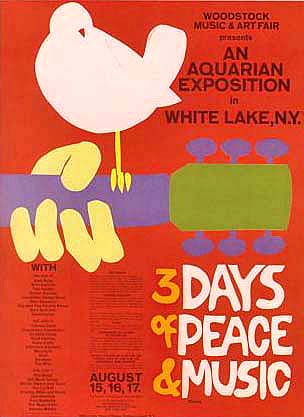 Parents are under no obligation to discuss their past behavior with their children, and on the subject of substance use, it is probably best if they don’t. Admitting past non-use implies a lack of empathy; admitting past use implies tacit approval. The issue at hand is not what the parents did when they were young, but rather what outcomes might ensue from a young person’s using marijuana now, even on an “occasional” basis, “just for fun.”
Parents are under no obligation to discuss their past behavior with their children, and on the subject of substance use, it is probably best if they don’t. Admitting past non-use implies a lack of empathy; admitting past use implies tacit approval. The issue at hand is not what the parents did when they were young, but rather what outcomes might ensue from a young person’s using marijuana now, even on an “occasional” basis, “just for fun.”
A parent’s script might go something like this: “What I did or did not do as a young person isn’t the issue and doesn’t change the concern I feel right now for your well-being. Here’s the deal: Marijuana in New York is illegal. The marijuana of today is far more potent a drug than it was twenty or thirty years ago. Marijuana affects your memory, your ability to learn and to achieve. It impairs your ability to drive a car safely. It increases the chance that you will experience an episode of mental illness, major depression, or anxiety. It’s an addictive substance. As use increases, the chances are your grades will go down, along with your prospects for a great college career, and a happy future. If I love you, and I do, how can I possibly condone your using marijuana, even ‘a little,’ knowing now what I know?”
How can a parent get help for their kids who may be using marijuana?
There are a number of excellent resources and treatment centers right here in the county. You will find a list of them at mkpartners.org on the “Resources” page.
You must, of course, talk to your child openly and without judgment about your concerns. In addition, reaching out to the Student Assistance Counselor at your child’s school should prove helpful. Having a professional evaluate the situation and then providing your child with whatever support or treatment is warranted is key.
For some additional perspective, professionally trained psychologists are available to offer assistance to parents and primary caregivers who want to talk with someone about their child’s drug and alcohol use at 1-855-DRUGFREE. Specialists at this national toll-free helpline of the Partnership for Drug-Free Kids speak English and Spanish and have years of experience helping families prevent and overcome substance abuse problems.

















